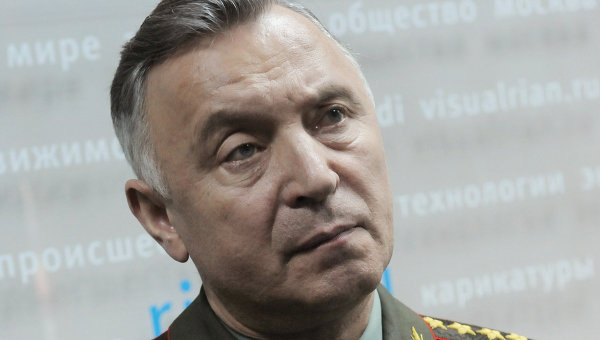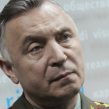
Makarov Outlines Battlefield Simulated Training For Smaller Russian Armed Forces
Publication: Eurasia Daily Monitor Volume: 8 Issue: 143
By:

Army-General Nikolai Makarov, the Chief of the General Staff has attempted to end the constant vacillation by the Russian defense ministry on the critical issue of the future of military manpower. Although much of his thinking on this relates to a process lasting several years, he has tried move technology to the forefront of force planning, which may prove to be his legacy to the Armed Forces. On July 8, government-linked Rossiyskaya Gazeta reported comments by Makarov on progressing toward significantly higher numbers of contract personnel over the next five years. Although this was not the first time that the seemingly arbitrary figure of 425,000 contract personnel was proffered as a potential target, Makarov did say something of great psychological importance, which was under-reported by the Russian media. The Chief of the General Staff stated that by 2016 there will be 425,000 contract personnel and 220,000 officers, or “70 percent” of the total manpower. This marks a departure from the notional “one million” in official dogma on manpower: in fact, less than 840,000 (https://www.rg.ru/2011/07/08/armia.html, July 8).
Makarov’s comments during his visit to the Tsugol training range in Transbaykal region recast familiar promises to make combat training more “complex,” and “challenging.” Yet, it became clear from additional reporting that the general regards technology to be a major driving force in these changes. On July 20, Makarov visited the St. Petersburg-based Transas Group, which specializes in maritime and aviation simulation models that the defense ministry plans to supply the latest models of personnel trainers to the Russian military by 2013. Makarov was shown Mikoyan Mi-8, MT-5 and Mi-35 trainer helicopters, in addition to the latest battlefield simulation system. He lamented that such trainers were supplied abroad, but not used domestically. These battlefield simulation systems were important, in Makarov’s view, as they would facilitate more realistic training for the types of conflict likely to be fought on the Russian periphery and in local conflicts. This advanced battlefield simulation system would be introduced at military districts and academy levels, then into the Combined Arms Armies (CAA) and brigades. Makarov also promised to procure domestically manufactured unmanned aerial vehicles (UAVs) (Interfax, July 20).
On July 21, Viktor Khudoleev writing in Krasnaya Zvezda profiled Makarov’s visit to Transas Group in St. Petersburg. Its purpose was to examine the level of development of modern electronic technologies for military use. Experts demonstrated UAVs, marine and aviation navigation systems for civilian and military use, and an interactive shooting range for training combat infantry. Makarov emphasized the need for mathematical and software equipment to further evolve, allowing the introduction of new generation simulation systems (https://www.redstar.ru/2011/07/21_07/1_01.html, July 21).
Transas Group is a global leader in simulated systems for marine specialists. It develops and produces a wide range of onboard equipment, including electronic chart systems, as well as shore-based Vessel Traffic Management Systems and provides services in the building and construction sector. Russia, Finland and Estonia recently cooperated in a unique EU funded project on the Gulf of Finland Maritime safety and marine Environment protection Cooperation (GOFMEC) facilitating disaster response simulator-based training: “Maritime educational institutes were equipped with Transas Pisces II Oil Spill simulator, the latest version of Navi-Trainer Professional 4000 navigation simulator, with added air surveillance/helicopter functions and live AIS (vessels Automatic Information System) function” (https://www.transas.com/company/products/, https://www.transas.com/company/products/, accessed on July 23).
Makarov observed a showcase tactical brigade exercise at the Tsugol training range in Eastern Military District, which also involved a crossing of the River Onon. Large-scale training and staff musters were conducted in the 29th CAA in Eastern MD, placed under the overall direction of Colonel-General Aleksandr Postnikov, the Commander-in-Chief of the Ground Forces. Major-General Aleksandr Romanchuk, commander of the 29th CAA, conducted an exercise to prepare for the brigade level tactical exercise conducted by the 36th Motorized Rifle Brigade (MRB) (Krasnaya Zvezda, July 8).
Makarov stressed the value of such exercises and noted that “Although one in every three servicemen in the formation has been serving since the spring of this year, in general the personnel of the brigade, during the exercise, acted intelligently and skillfully, even during the most complex stage – the crossing of the water obstacle” (Krasnaya Zvezda, July 8). In other words, the exercise required the presence of inexperienced conscripts with no more than a few weeks of military service behind them. The 36th MRB may have one third of its personnel drawn from conscripts, though apparently brigades elsewhere in the country are not as fortunate.
Oleg Vladykin profiled the “progress” of mixed-manning in Southern MD in Nezavisimoye Voyennoye Obozreniye. Given the volatility of the North Caucasus and the potential use of these forces in the South Caucasus during a local conflict, the article focused on how “professionals” are trained from “conscripts” and left an impression that the top brass remain obsessed with numbers and box ticking. The 22nd Spetsnaz brigade in the Southern MD is staffed with 60 percent conscripts. Moreover, the practice has reemerged of assigning a “responsible officer” to spend the night in the barracks. Officers said they still do not completely trust soldiers and sergeants (Nezavisimoye Voyennoye Obozreniye, July 1).
The Defense Ministry Press Service and Information Directorate reported glowing results based on the winter combat training period. This involved over 150 command-staff exercises, almost 300 company level and three battalion exercises, more than 3,000 live-fire exercises in units and approximately 1,000 at company level. Time limits for physical training were tightened and progress was being made toward enhancing “readiness” among officers. However, the summer combat training period, which began on June 1, will focus on training command and control elements up to battalion level. In Central MD, combat training will be specifically geared toward preparing for the Tsentr 2011 operational-strategic exercise in September, while a similar process is underway in Western MD in readiness for the Shchit Soyuza Russo-Belarusian exercise. Training geared toward achieving a certain outcome in these larger exercises will prove to be of limited value, but provides a show for the top brass (Krasnaya Zvezda, July 7).
Battlefield simulators, whether domestically produced or imported from Germany, would significantly enhance combat training. However, with conscripts serving for twelve months, and leaving the units en masse twice annually, even this would be of limited value unless manning moves toward personnel serving for a reasonable length of contract service. Makarov is utilizing technological determinism in order to drive through a switch toward readjusting the contract-conscript imbalance, currently compelling commanders to go through the motions of making conscripts look like real soldiers.




